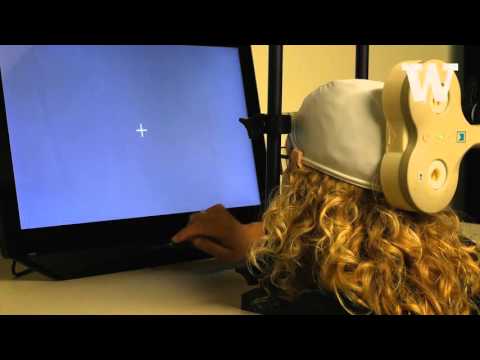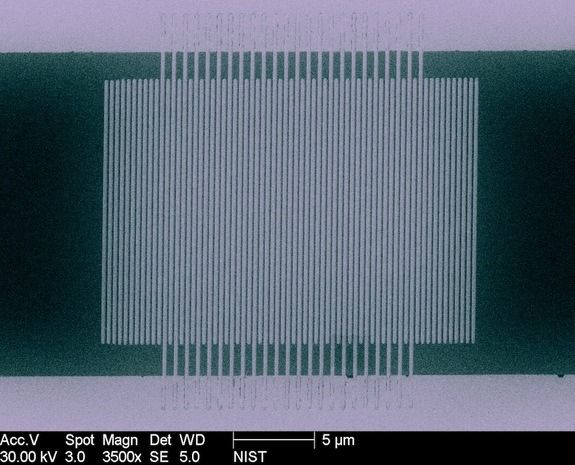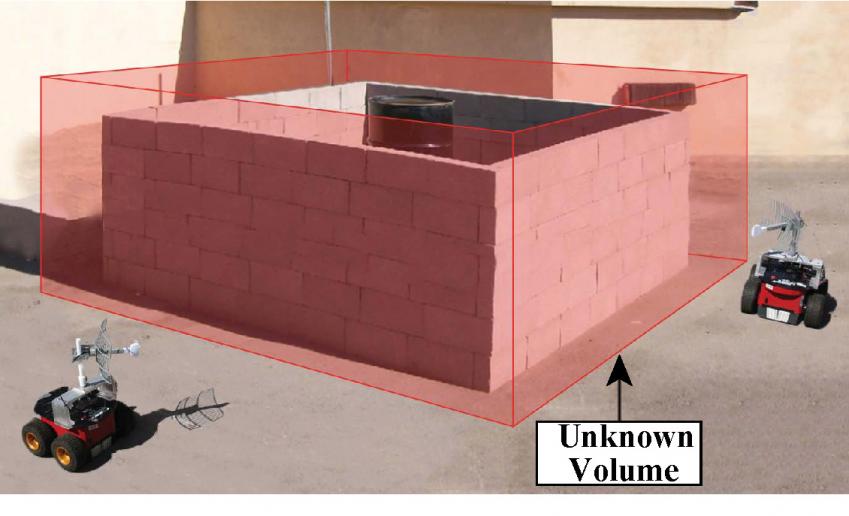Archive for the ‘internet’ category: Page 311
Oct 5, 2015
This device could harvest energy from the air to power our home gadgets
Posted by Shailesh Prasad in categories: electronics, energy, internet, mobile phones
A British tech company has come up with a new way of powering wearables and smart home devices: a device called the Freevolt, which can harvest the ambient energy from radio waves and turn it into a small amount of electricity for low-energy gadgets to tap into.
As CNET reports, this level of energy can’t keep a smartphone running, but it could be enough to power that remote sensor on your garden gate. If sensors and beacons have a wireless energy source plus wireless connectivity, it opens up more possibilities for kitting out our homes and gardens with these kind of devices.
“Companies have been researching how to harvest energy from Wi-Fi, cellular, and broadcast networks for many years,” Drayton Technologies CEO and chairman, Lord Drayson, said in a press statement. “But it is difficult, because there is only a small amount of energy to harvest and achieving the right level of rectifying efficiency has been the issue — up until now. For the first time, we have solved the problem of harvesting usable energy from a small radio frequency signal.”
Oct 4, 2015
Why The Internet Needs IPFS Before It’s Too Late
Posted by Phillipe Bojorquez in category: internet
IPFS isn’t exactly a well-known technology yet, even among many in the Valley, but it’s quickly spreading by word of mouth among folks in the open-source community. Many are excited by its potential to greatly improve file transfer and streaming speeds across the Internet.
From my personal perspective, however, it’s actually much more important than that. IPFS eliminates the need for websites to have a central origin server, making it perhaps our best chance to entirely re-architect the Internet — before its own internal contradictions unravel it from within.
How, and why? The answer requires a bit of background.
Oct 1, 2015
IBM unlocks the secret to carbon nanotube transistors
Posted by Shailesh Prasad in categories: computing, engineering, internet, materials, neuroscience
Following Moore’s law is getting harder and harder, especially as existing components reach their physical size limitations. Parts like silicon transistor contacts — the “valves” within a transistor that allow electrons to flow — simply can’t be shrunken any further. However, IBM announced a major engineering achievement on Thursday that could revolutionize how computers operate: they’ve figured out how to swap out the silicon transistor contacts for smaller, more efficient, carbon nanotubes.
The problem engineers are facing is that the smaller silicon transistor contacts get, the higher their electrical resistance becomes. There comes a point where the components simply get too small to conduct electrons efficiently. Silicon has reached that point. But that’s where the carbon nanotubes come in. These structures measure less than 10 nanometers in diameter — that’s less than half the size of today’s smallest silicon transistor contact. IBM actually had to devise a new means of attaching these tiny components. Known as an “end-bonded contact scheme” the 10 nm electrical leads are chemically bonded to the metal substructure. Replacing these contacts with carbon nanotubes won’t just allow for computers to crunch more data, faster. This breakthrough ensures that they’ll continue to shrink, following Moore’s Law, for several iterations beyond what silicon components are capable of.
“These chip innovations are necessary to meet the emerging demands of cloud computing, Internet of Things and Big Data systems,” Dario Gil, vice president of Science & Technology at IBM Research, said in a statement. “As technology nears the physical limits of silicon, new materials and circuit architectures must be ready to deliver the advanced technologies that will drive the Cognitive Computing era. This breakthrough shows that computer chips made of carbon nanotubes will be able to power systems of the future sooner than the industry expected.” The study will be formally published October 2nd, in the journal Science. This breakthrough follows a number of other recent minimization milestones including transistors that are only 3-atoms thick or constructed from a single atom.
Sep 26, 2015
Mark Zuckerberg: Internet access can eradicate extreme poverty
Posted by Shailesh Prasad in category: internet
Mark Zuckerberg spoke about the importance of internet access in combating extreme poverty at the United Nations’ 70th annual general assembly session.
Sep 26, 2015
Zuckerberg, Gates make bid for universal Internet access
Posted by Bryan Gatton in categories: education, internet
Facebook founder Mark Zuckerberg and Microsoft billionaire Bill Gates on Saturday threw their weight and resources behind the goal of bringing Internet access to everyone in the world by 2020.
The pledge is part of a United Nations effort to eradicate extreme poverty by 2030, a goal set on Friday during a special summit at the global body.
The Internet became commonplace in developed countries in the 1990s, but UN officials estimate that half the world does not have reliable access—especially women and girls, whose education is vital to development.
Sep 25, 2015
First brain-to-brain ‘telepathy’ communication via the Internet
Posted by Sean Brazell in categories: internet, neuroscience

University of Washington graduate student Jose Ceballos wears an electroencephalography (EEG) cap that records brain activity and sends a response to a second participant over the Internet (credit: University of Washington)
The first brain-to-brain telepathy-like communication between two participants via the Internet has been performed by University of Washington researchers.
Sep 23, 2015
Scientists shatter distance record for teleporting quantum data
Posted by Shailesh Prasad in categories: computing, encryption, internet, quantum physics
Quantum teleportation, the act of reconstructing quantum data somewhere else, is impressive just by itself. However, scientists at the US’ National Institute of Standards and Technology have managed to one-up that feat. They’ve broken the distance record for quantum teleportation by transferring the information from one photon to another across 63 miles of optical fiber. That may not sound like much, but it’s an achievement just to beam that data in the first place — 99 percent of photons would never make the complete trip. It was only possible thanks to newer detectors that could pick up the faint signal of the lone light particle.
You’d clearly need to send much more information before this teleportation becomes practical, but the achievement does open the door to many possibilities in quantum computing. You could use unbreakable quantum encryption at inter-city distances, for instance. The biggest challenge may simply be to extend the range to the point where quantum data transfers work on the scale of the internet, where there are occasionally thousands of miles between connections.
[Image credit: Getty Images/iStockphoto].
Sep 22, 2015
Shades of ‘Star Trek’? Quantum Teleportation Sets Distance Record
Posted by Sean Brazell in categories: encryption, internet, quantum physics
You’ve gotta love Star Trek, but there is absolutely NO WAY I’d ever set foot in a real teleportation device! (if one ever really got made, of course) Call me crazy, but I’m kinda partial to keeping my molecular cohesion as intact as possible, which kinda rules out having it ripped apart and remade on the other side.
A record-breaking distance has been achieved in the bizarre world of quantum teleportation, scientists say.
The scientists teleported photons (packets of light) across a spool of fiber optics 63 miles (102 kilometers) long, four times farther than the previous record. This research could one day lead to a “quantum Internet” that offers next-generation encryption, the scientists said.
Continue reading “Shades of ‘Star Trek’? Quantum Teleportation Sets Distance Record” »
Sep 21, 2015
Researchers enable robots to see through solid walls with Wi-Fi (w/ Video)
Posted by Shailesh Prasad in categories: internet, materials, mobile phones, robotics/AI
(Phys.org) —Wi-Fi makes all kinds of things possible. We can send and receive messages, make phone calls, browse the Internet, even play games with people who are miles away, all without the cords and wires to tie us down. At UC Santa Barbara, researchers are now using this versatile, everyday signal to do something different and powerful: looking through solid walls and seeing every square inch of what’s on the other side. Built into robots, the technology has far-reaching possibilities.
“This is an exciting time to be doing this kind of research,” said Yasamin Mostofi, professor of electrical and computer engineering at UCSB. For the past few years, she and her team have been busy realizing this X-ray vision, enabling robots to see objects and humans behind thick walls through the use of radio frequency signals. The patented technology allows users to see the space on the other side and identify not only the presence of occluded objects, but also their position and geometry, without any prior knowledge of the area. Additionally, it has the potential to classify the material type of each occluded object such as human, metal or wood.
The combination of imaging technology and automated mobility can make these robots useful in situations where human access is difficult or risky, and the ability to determine what is in a given occluded area is important, such as search and rescue operations for natural or man-made disasters.
















